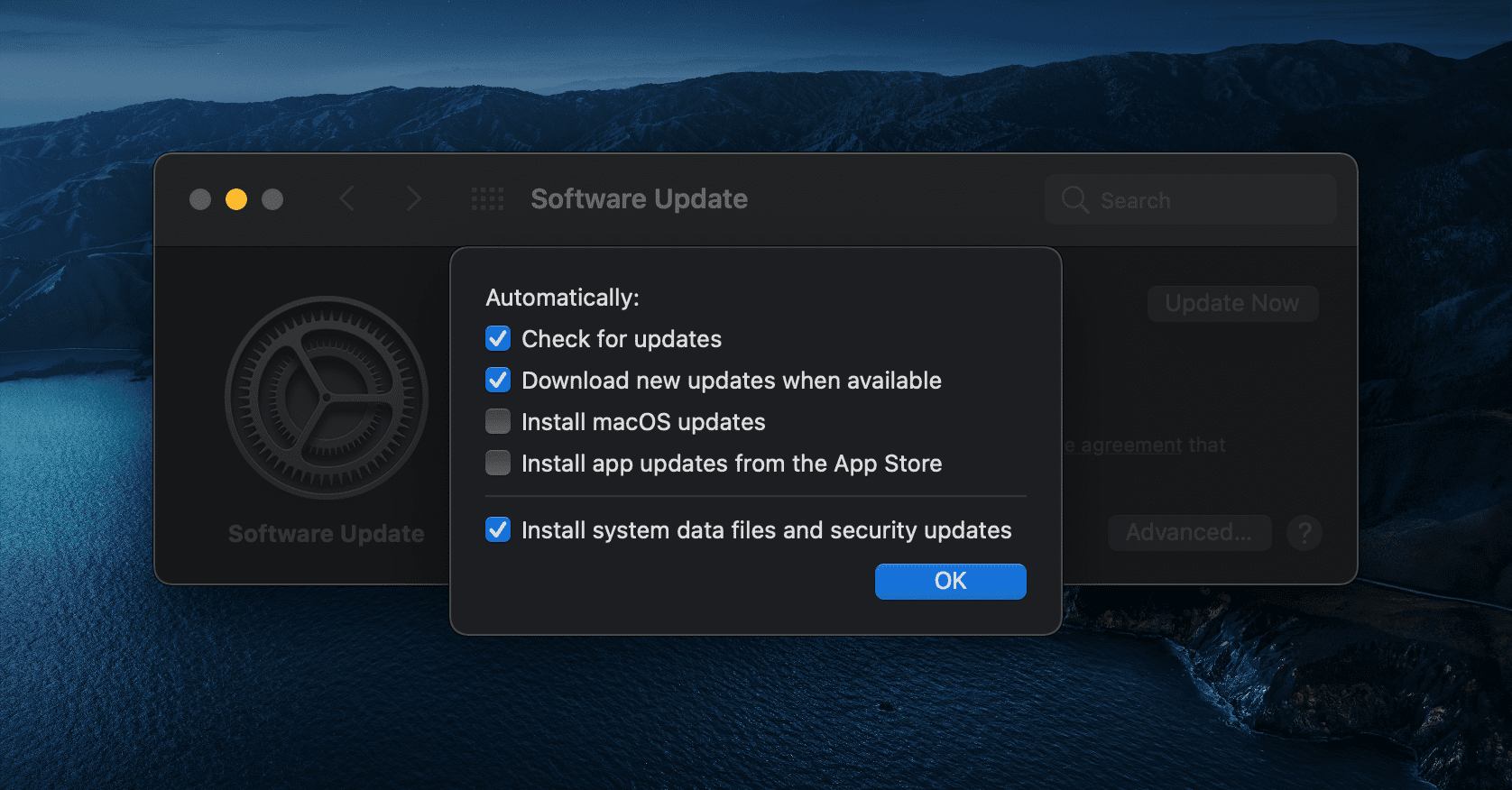

- #Check for software updates on osx using terminal how to#
- #Check for software updates on osx using terminal mac os x#
- #Check for software updates on osx using terminal install#
In many cases, people get them straight from a developers website, or third-party subscription service. Not everyone downloads apps on a Mac from the Mac App Store. #4: For third-party apps, you can also disable updates within individual app settings

#Check for software updates on osx using terminal how to#
Here is how to prevent this from happening: Apps shouldn't be working unless you need them and remember agreeing to open them. All of this potentially uses processing power, such as CPU, and even internet bandwidth. These are known as background apps, or and with some they have launch agents that activate whenever a Mac is switched on. With some apps, they update and even work in the background without you being aware. #3: Delete Google Automatic updaters and other background agents
#Check for software updates on osx using terminal install#
However, leave the following box enabled (as this is crucial for security): Install system data files and security updates. Download newly available updates in the background.Uncheck ALL of the following boxes to prevent automatic updates:.
#Check for software updates on osx using terminal mac os x#
With older operating systems - Mac OS X High Sierra, Sierra, El Capitan, Yosemite, Mavericks - the process is slightly different from the one listed above for stopping auto app updates. #2: Disable automatic updates (For: Mac OS X High Sierra, Sierra, El Capitan, Yosemite, Mavericks) For these, we've covered Mac OS X High Sierra, Sierra, El Capitan, Yosemite, Mavericks in the tip below - as they follow the same process - and older operating systems in another tip further down the article. In the future, when an app you've downloaded through the Mac App Store has an update coming through, you will be alerted, but it can’t download until you manually confirm it.ĭepending on the macOS or older version, Mac OS X that you are running, there are other ways to disable automatic updates. In this, is a box for Automatic Updates (if checked by default, uncheck the box to disable automatic updates).#1: Change update preferences (macOS Mojave 10.14 and newer) There are a few ways you can do this, and apps that can make it quicker and easier to ensure you’ve only got the apps you need running on your Mac. In this article, we look at the ways you can prevent automatic app updates on a Mac. It can be better to know exactly what you are downloading, even if you’ve been using the same app for a while. These will automatically run in the background and save you a little time, keeping apps fully up-to-date. But to help you do it all by yourself, we’ve gathered our best ideas and solutions below.įeatures described in this article refer to the MacPaw site version of CleanMyMac X.Īutomatic Mac App updates can be useful. So here's a tip for you: Download CleanMyMac to quickly solve some of the issues mentioned in this article.


 0 kommentar(er)
0 kommentar(er)
